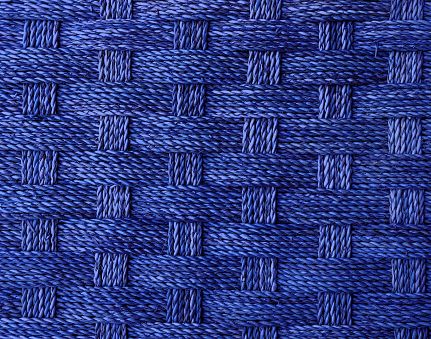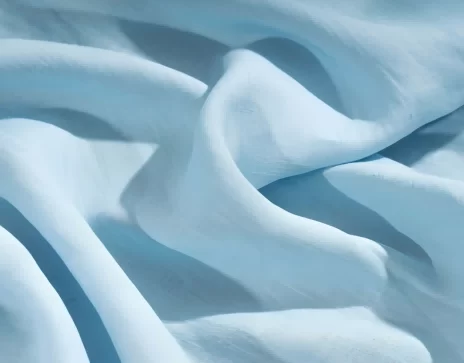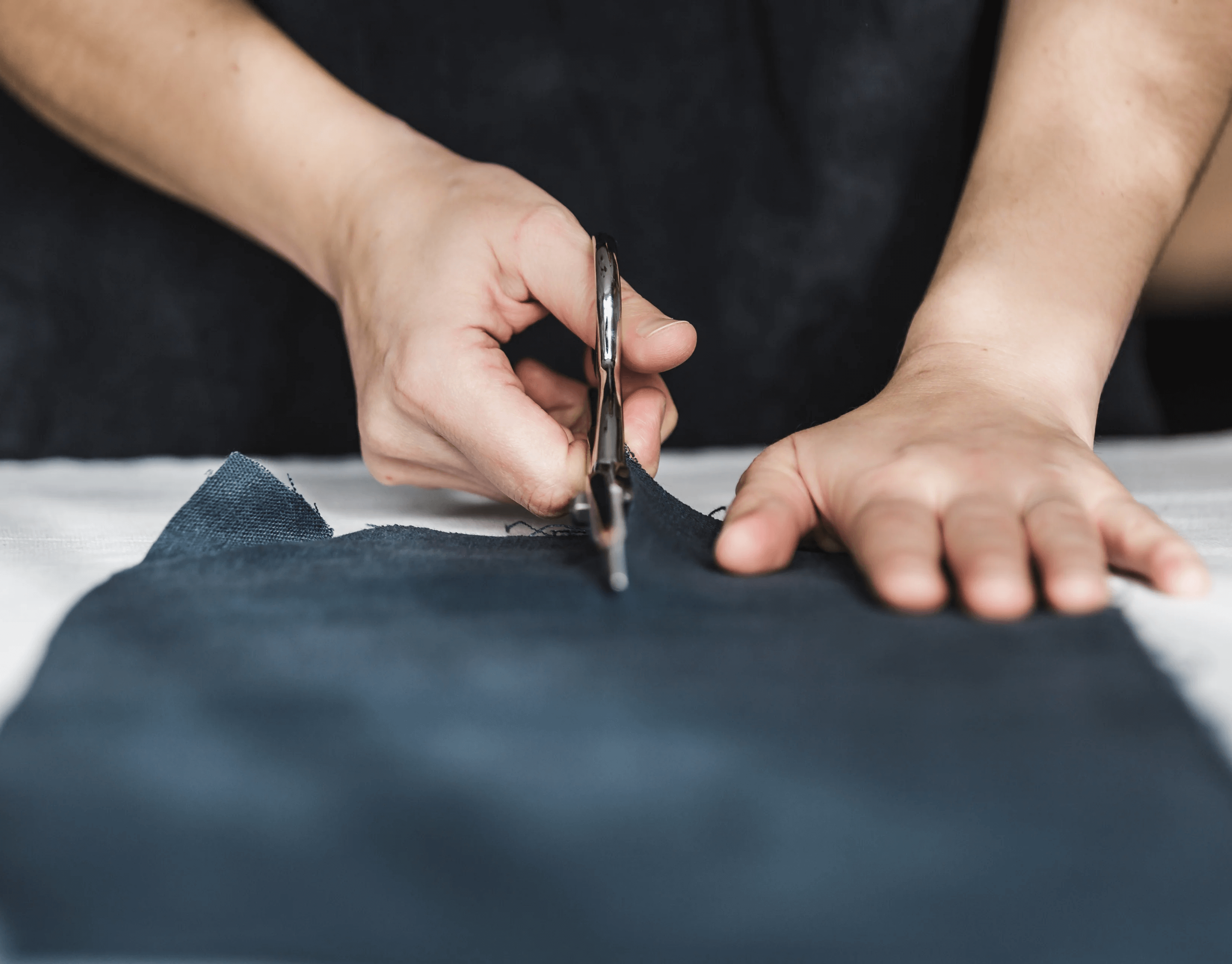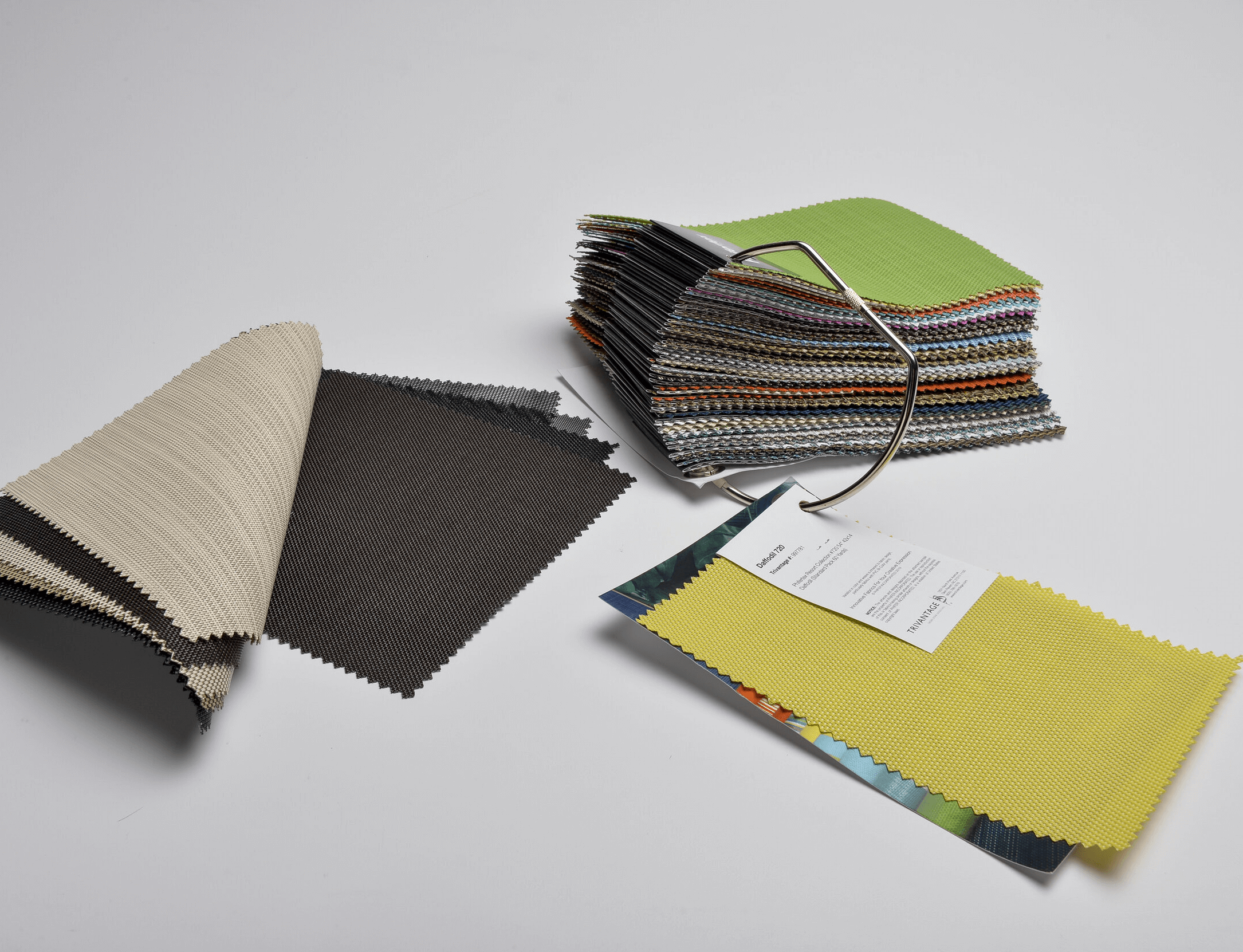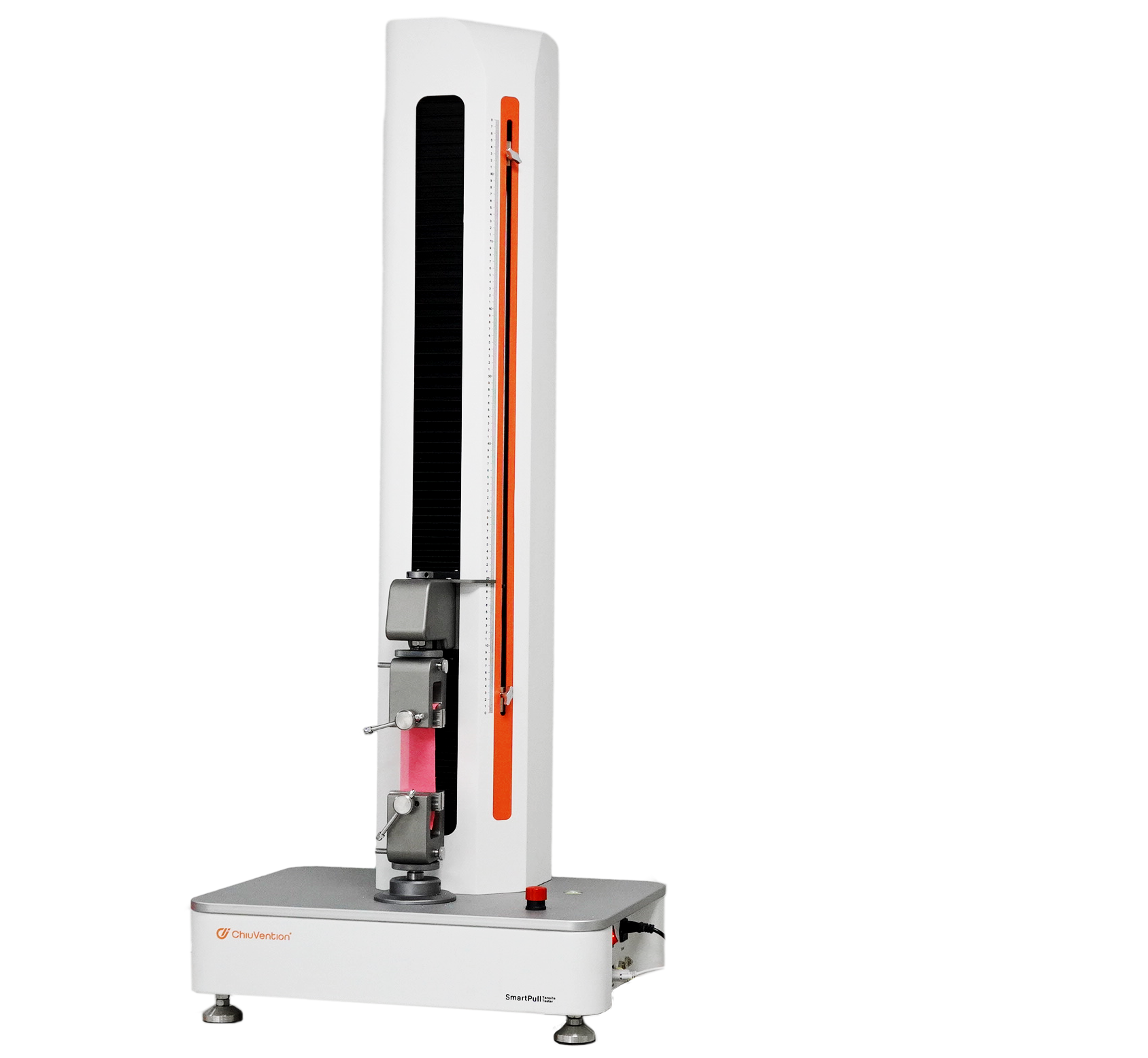ISO 13934-1 and ISO 13934-2 differ in their test method and scope. They are both textile tensile tests.
Test method
ISO 13934-1:
The strip method tests the fabric’s width in a tensile fixture. It is for testing loose or wet fabrics. The fixture holds the sample in a low-stress area. This causes the sample to break in a narrow central area, away from the jaws.
ISO 13934-2:
The grip method is what we call this method. The tension fixture is narrower than the fabric sample. The sample clamps it in the center. The grip and force are the same for each test type. But, the stress configurations and effective widths are different. So, the tests measure different maximum forces.
Scope of application
ISO 13934-1:
Applies to most textiles, including woven and knitted fabrics.
ISO 13934-2:
Applies to fabrics needing a specific stress configuration. For example, it must simulate the conditions faced by the user or the process when using the material.
Test procedure and equipment requirements
ISO 13934-1:
During testing, we randomly cut samples from batches. We prepare them to ensure they are free from creases and imperfections. The specimen must have a width of 100±2mm and a length that meets a marking distance of 100mm. The tensile testing machine is set at 100mm and the tensile speed is 50mm/min. Researchers dry wet samples on absorbent paper before testing.
ISO 13934-2:
The test procedure is similar to ISO 13934-1. The fixture is narrower than the sample. The fixture holds the sample in the centre.
Calculation of results
ISO 13934-1:
Calculation of the maximum force and the elongation at that maximum force.
ISO 13934-2:
It also calculates the maximum force and elongation. But, the different stress configurations may cause different maximum force values.
In summary, ISO 13934-1 and ISO 13934-2 differ in their test methods and scopes. The choice of standard depends on the specific test needs and material properties.
ISO 13934-1 Sampling and sample preparation for fabric tensile strength testing
Strip method testing for max force and elongation at max force.
Randomly cut a minimum of 1m full width from each pile in the batch as a laboratory sample. Ensure that the samples are free from creases and visible defects.
Specimen Preparation
Cut a set of at least 5 specimens from each specimen in both the warp and weft directions. We need more specimens for higher accuracy. The specimens must be representative and avoid wrinkles. If there are wrinkles, they must be at least 150mm from the edge of the fabric. For the warp group, do not take them on the same warp yarn. For the weft group, do not take them on the same weft yarn.
Each specimen’s width must be (50±0.5) mm. Its length must allow a marking distance of 200 mm, or 100 mm if its maximum force elongation is over 75%. We may accept other widths by agreement, but you must note them in the test report.
The specimen’s length shall be parallel to the fabric’s warp or weft. Its width shall match the lace’s width. Remove an equal amount of yarn from both sides of the specimen along its length. The width of the specimen must be (50 ± 0.5) mm. The width of the linen shall be such that the yarn does not come out of the fringe during the test.
For woven fabrics, a 5 mm, 15-yarn-wide tassel is best. And for tighter fabrics, the tassel can be narrower. For looser fabrics, it should be about 10 mm.
For fabrics with few yarns per cm, the specimen’s width should be as close as possible to that of the worn specimen. Count the number of yarns across the entire width of the specimen. If ≥ 20, the specimen should have the same number of yarns after wear. Andf 20, it should contain at least 20 yarns. If the specimen width is not (50±0.5) mm, state it and the yarn count in the report.
For non-abradable fabrics, cut the specimen to 50 mm wide. Cut parallel to the fabric, either lengthwise or crosswise. If only tearing tests the fabric’s yarn orientation, don’t use shearing to get the width.
Wet Sample Preparation
To measure the maximum force on the wet fabric, the cut specimen must be at least twice as long as the dry fabric one. Number the ends of each specimen. Grind it to the required width. Then, cut it into two crosswise sections. One is for the dry maximum force test. The other is for the wet maximum force test.
Ensure that each pair of specimens contains the same yarn lengthwise. The specimen for the wet maximum force test must be longer than the one for the dry test. We base this on experience with fabric shrinkage after soaking. The procedure will wet specimens three times at (20±2)°C for over 1H, per ISO 3696. Instead, use a solution of a non-ionic wetting agent with a maximum of 1g per litre instead of three times water. For testing in the tropics, the temperature can be set according to ISO139.
ISO 13934-2 Sampling and sample preparation for fabric stretching
Sampling
Randomly cut a minimum of 1m full width from each pile in the batch as a laboratory sample. Ensure that the samples are free from creases and visible defects.
Specimen Preparation
Cut a set of specimens from each specimen in the warp and weft directions. Each set must have at least 5 specimens. Increase the number if you need higher accuracy. The specimens should be representative and avoid wrinkles. They must be at least 150mm from the edge of the cloth. The warp sample group must not use the same warp yarn. The weft sample group must not use the same weft yarn.
The effective width of each sample should be (100±2) mm and its length should be able to meet the 100 mm marking distance. Draw a marking line on each sample. It should be 38 mm from the long side and parallel to a yarn. The line must run the full length of the sample.
Tensile strength test ISO 13934.2 (Grab sample method)
1. Purpose and principle
To find the breaking strength of a specimen, clamp its center. Then, stretch it at a specified rate until it breaks.
2. Equipment
2.1 TITAN Tensile Strength Tester
3.Preparation of test samples
3.1 Cut 5 specimens in each direction of warp and weft. Any two specimens must not contain the same warp yarn. Cut the specimens at least 15cm from the cloth’s edge.
3.2 The size of the sample is 100x150mm.
4. Environmental requirements. We must perform sample placement and testing under standard conditions.
5.Operation Steps
5.1 Set the tensile strength tester to a 100mm or 75mm jaw distance. Set the tensile speed to 50mm/min. Clamp the specimen on the upper jaws. The specimen’s center line must be parallel to the jaws’ front end. Then, close the jaws by using the specimen’s weight to lower it.
5.2 Start the apparatus to stretch the test specimen. Repeat the above procedure for all samples.
6. Calculation and Presentation of Results
6.1 Each sample’s breaking force in N (Newtons) is recorded in each direction. First, we calculate the average value for each direction. Then, we modify it: ISO 13934-2: <100N becomes 1N; ≥100N and <1000N becomes 10N; and ≥1000N becomes 100N. GB/T 3923.1: Round to integer digits.
7.Report
7.1 Test method
7.2 Average value of breaking strength of samples in warp and weft direction.
ISO13934-1 Test Procedure for Tensile Strength Test of Fabrics
Setting the marking distance
For fabrics with ≤75% elongation at maximum force, the marking distance is (200±1) mm. For fabrics with >75% elongation at maximum force, the marking distance is (100±1) mm.
Elongation or Stretch
Set the tester’s stretch to the max elongation of the fabric under force in the table below.
Sample Mounting
You can mount the specimen either pre-tightened or “slack mounted.” The latter means it hangs freely, under its own weight. Using the loose mounting method, the technician clamps one end of the specimen in the centre of the upper jaw. Its own mass suspends the other end in the lower jaw, parallel to the tension. This ensures the tension’s center line hits the mid-point of the closed lower jaw.
The initial length of the maximum force elongation was the sum of the marking distance and the specimen’s pre-tension elongation. We measure specimen elongation from the preload point on the force-elongation curve. If a device records elongation, use the correct initial length to calculate it.
We install preload and apply the appropriate preload. For elastic fabrics, use 0.5N. For non-elastic fabrics, use the preload based on the specimen’s mass per unit area.
Start the tensile tester. It will stretch the specimen until it breaks. Record the max force, max elongation, and, if needed, the breaking force and elongation. Test at least 5 specimens in each direction. Record elongation or extensibility to the nearest.
Discard test results if the specimen slips asymmetrically along the jaw line, or if it slips over 2mm.
Wet sample test
Remove the specimen from the solution. Place it on absorbent paper to dry it. Then, test it using the procedure above. For wet specimens, apply half the preload specified for dry specimens.
Calculation and expression of results
Calculate the mean of the maximum force in each test direction. If required, also find the mean of the breaking force in Newtons.
Find the average of the maximum force elongation in the warp and weft directions. Do this separately for each direction. If needed, also average the elongation at break.
If needed, calculate the coefficient of variation to the nearest 0.1%. Also, find the 95% confidence limit of the tested characteristic. Round both to the same precision as the average.
What are the areas of application of the tensile strength test ISO 13934.1?
The ISO 13934-1 standard tests the tensile properties of textiles. The standard specifies a method to test textile fabrics. It measures their maximum force and elongation using the strip method. It applies to woven fabrics. This includes those made stronger by elastomeric fibres or treatments. It also applies to fabrics from other processes. But, it does not apply to geotextiles, nonwovens, coated fabrics, or woven textile glass. Nor does it apply to fabrics made of carbon fibres or polyolefin flat yarns.
Test methods
The ISO 13934-1 standard uses a constant elongation (CRE) testing machine. It stretches a fabric specimen of a specified size at a constant rate until it breaks. It records the maximum force and the elongation at maximum force. If needed, record the force and elongation at break. This includes equilibrium and wet state tests in a standard atmosphere.
Areas of application
Textile industry:
It mainly tests the tensile properties of textiles. This helps manufacturers and designers optimize product design.
Apparel manufacturing:
We use tensile testing to ensure apparel materials are durable and comfortable. The designers and producers complete it during the clothing’s design and production.
Materials Science Research:
In materials science, researchers use it to test the strength of various fibres and fabrics. It provides data to help develop new materials.
Quality control: to ensure products meet standards and cut defects.
The ISO 13934-1 standard is vital in textile work. It guides the development, production, and quality control of textiles.
What are the application areas of ISO 13934.2 for tensile strength testing?
The ISO 13934.2 standard tests the tensile properties of fabrics, mainly woven ones. The standard sets the maximum tensile strength of fabrics. It uses the grab sample method. It applies to all woven fabrics. This includes those with elastic properties from elastomeric fibres or treatments. It applies to fabrics made by other processes. But, it does not apply to geotextiles, nonwovens, coated fabrics, or glass and carbon fibre or polyolefin tape yarns.
Fields of application
Garment manufacturing:
In garment production, tensile strength testing ensures that fabrics don’t break from stretching. It guarantees the garment’s quality and durability.
Home textiles:
In home textiles, testing can ensure that stretching won’t damage fabrics over time. This will increase the product’s life.
Industrial Textiles:
In industrial uses, like filters and conveyor belts, we test tensile strength. It ensures materials can stretch a bit during use. This guarantees their safety and functionality.
For more information on textile testing methods/standards
or textile testing machines, contact us:
What’s App: +86 180 2511 4082
Tel: +86 769 2329 4842
Fax: +86 769 2329 4860
Email: medium@chiuvention.com
